Revision Notes: Soils in India | Geography Class 10 ICSE PDF Download
Soil
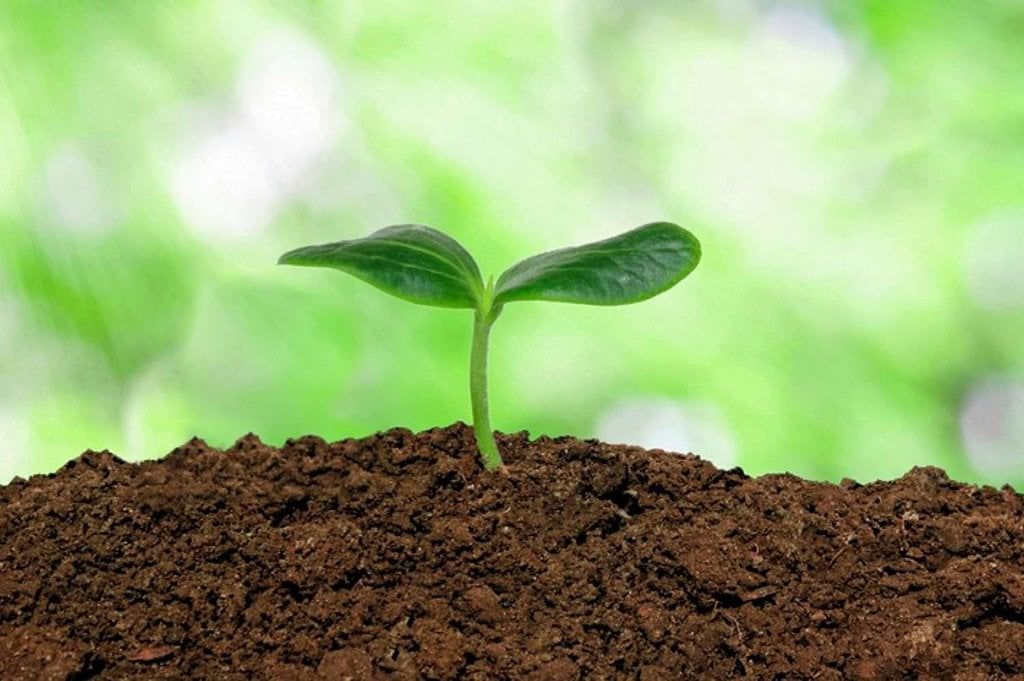
Soil is a natural resource that can be renewed. It is home to many living organisms and is crucial for plant growth. The top layer of soil, known as topsoil, is rich in humus. The formation of soil is influenced by factors such as temperature changes, the type of parent rock, decomposers, and the action of running water.
Fertile soil is vital for farming because it has certain important features:
- It contains enough moisture to provide necessary nutrients to plants.
- It has sufficient depth for plant roots to grow.
- It is rich in essential nutrients like nitrogen, potassium, and phosphorus.
- It includes organic matter.
The fertility of soil can be enhanced by adding fertilizers.
Classification of Soil
Soil can be classified based on its formation into two categories:
(a) Residual Soil
- Black Soil: This soil is known for its moisture-retaining capacity and is ideal for cotton cultivation.
- Red Soil: Characterized by its reddish color due to iron content, this soil is suitable for growing millets, pulses, and oilseeds.
- Laterite Soil: Formed in tropical regions with high rainfall, this soil is rich in iron and aluminum and is used for growing cashew nuts and tea.
- Desert Soil: Found in arid regions, this soil is sandy and lacks organic matter, making it suitable for drought-resistant crops.
(b) Transported Soil
- Alluvial Soil: This soil is formed by the deposition of sediments carried by rivers. It is found in river basins and deltas and is suitable for a wide range of crops due to its fertility.
- Other Types of Soil: This includes various other soil types formed by the transportation and deposition of soil materials by agents like wind and water.
Soil in India can be classified based on its texture, thickness, age, chemical and physical properties.
Alluvial Soil
Formation: Alluvial soil is created by the deposition of sediments carried by rivers. These sediments, known as alluvium, are composed of very fine particles and are deposited as rivers flow from their upper to lower courses.
Characteristics:
- Upper Plains: In the upper plains of river valleys, alluvial soil is coarse with larger soil particles.
- Lower Valleys: As rivers continue to flow and deposit sediment, the soil becomes finer in the lower river valleys.
- Lower Ganga Valley: In this region, alluvial soil is dry, porous, sandy, and has a faint yellow color.
- West Bengal and Bangladesh: In these areas, alluvial soil is compact, less coarse, and moister compared to the lower Ganga Valley.
Differences between Bangar and Khadar Soils
Bangar Soil:
- Old alluvial soil.
- Higher concentration of kankar nodules, which are calcium carbonate deposits.
- Comparatively less fertile than khadar soil.
- Generally found in upland areas.
Khadar Soil:
- New alluvial soil deposited by annual monsoon floods.
- Lower concentration of kankar nodules.
- More fertile due to regular deposition of nutrients.
- Typically found in low-lying floodplains.
Black Soil
- Other Names: Black soil is also known as regur soil or black cotton soil because of its suitability for cotton cultivation.
- Formation: This soil is a residual type, formed from the weathering of lava rocks at its place of origin.
- Texture and Composition: Black soil is clayey and finely textured, with about 50% clay content, making it highly water-retentive.
- Color: The soil is black due to its origin from weathered lava rocks.
- Water Retention: The high clay content allows the soil to retain moisture, which is beneficial for crops.
- Seasonal Behavior: When wet, black soil expands, making ploughing difficult. During dry seasons, it shrinks and develops cracks, allowing for better air circulation.
- Crop Suitability: This soil is suitable for a variety of crops, including cotton, jowar, sugarcane, wheat, linseed, and gram. It is also suitable for oilseeds, pulses, cereals, tobacco, and vegetables.
- Moisture Content: The subsoil of black soil retains moisture even during the rainy season, which is advantageous for crop growth.
Red Soil
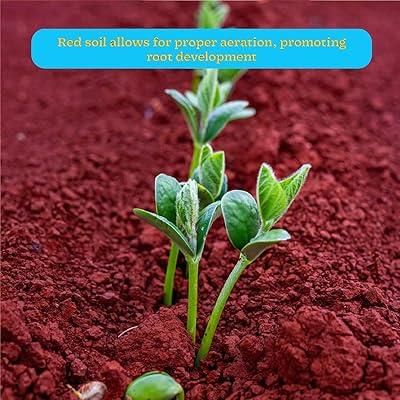
Red soil is formed from the ancient crystalline and metamorphic rocks of the Peninsular Plateau. These rocks have fragmented over time to create this type of soil. The color of red soil comes from the high presence of iron oxide, which is why it appears red. However, when iron oxide is hydrated, the soil can take on a yellowish hue.
Characteristics of Red Soil
- Porous and Rich in Iron Oxide: Red soil is known for its porosity and the large quantities of iron oxide it contains.
- Shallow, Loose, and Aerated: This soil is typically shallow, loose, and well-aerated, making it different from denser soil types.
- Nutrient Deficiency: Red soil is deficient in essential nutrients like nitrogen, phosphorus, potassium, and organic matter. It also contains only small amounts of soluble salts.
- Low Fertility: Due to its low fertility, red soil often requires the addition of fertilizers to support plant growth.
- Irrigation Needs: This type of soil requires irrigation to be suitable for agriculture.
- Suitable Crops: Red soil is suitable for growing crops such as rice, ragi (finger millet), tobacco, groundnut (peanut), and potatoes.
Laterite Soil
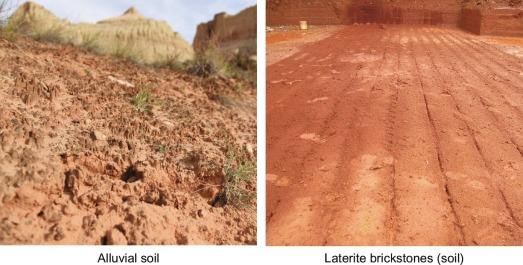
Laterite soil is formed through the atmospheric weathering of rocks in conditions of high temperature and heavy rainfall. This process leads to the leaching of nutrients, making the topsoil infertile. Leaching, also known as desilication, occurs when nutrients percolate down into the soil due to intense rainfall.
There are two types of laterite soils: upland laterites, which are found on hills and uplands, and lowland laterites, which are formed when upland laterites are transported by rivers and streams to lowland areas.
Characteristics of Laterite Soil
- Color: Laterite soil is red in color due to the presence of iron oxide, which is formed during the leaching process.
- Texture: The soil has a coarse texture and is porous, allowing for some drainage.
- Nutrient Deficiency: Laterite soil is deficient in essential nutrients such as lime, magnesium, and nitrogen.
- Fertility: The soil is not very fertile because it does not retain moisture well.
- Acidity: Laterite soil is acidic due to the leaching of alkalis from the soil.
Mountain Soil
This type of soil is found in hilly and mountainous regions. It includes various subtypes such as peat, meadow, forest, and hill soils.
- Desert Soil: Desert soil is sandy in nature and is formed due to the weathering of rocks in desert regions.
- Saline and Alkaline Soils: These soils contain a large amount of salts and alkalis. They are formed when tidal water accumulates in coastal areas with poor drainage.
- Marshy Soil: Marshy soil is found in waterlogged areas, particularly in coastal regions or near river deltas. This soil is rich in iron and organic matter.
Distribution of Soils in India
Alluvial Soil:
Inland Alluvium: Found in the plains of the Indus, Ganga, and Brahmaputra rivers, stretching from Punjab to Bangladesh and Assam. This type is also present in Haryana, Uttarakhand, Uttar Pradesh, Bihar, West Bengal, and parts of Gujarat and Rajasthan.
Deltaic Alluvium: Occurs in the deltas of the Ganga-Brahmaputra, Mahanadi, Godavari, Krishna, and Kaveri rivers.
Coastal Alluvium: Located along the coastal strips of Peninsular India and the plains of Gujarat.
Black Soil:
This soil type originates from the Deccan lava traps and includes areas in Maharashtra, Gujarat, Madhya Pradesh, Andhra Pradesh, Karnataka, Rajasthan, Uttar Pradesh, and some regions of Tamil Nadu.
Red Soil:
Predominantly found in parts of Tamil Nadu, Chhattisgarh, Jharkhand, Bundelkhand, Odisha, Meghalaya, Mizoram, Manipur, and Nagaland, mainly in the Plateau regions of Peninsular India.
Laterite Soil:
Located in the highland areas of the Peninsular Plateau, including parts of Madhya Pradesh, Maharashtra, Odisha, West Bengal, Andhra Pradesh, Karnataka, Kerala, and Tamil Nadu.
Soil Erosion
- Soil erosion refers to the process of wearing away soil cover due to wind action and washing down of soil cover by running water.
Soil Erosion by Water
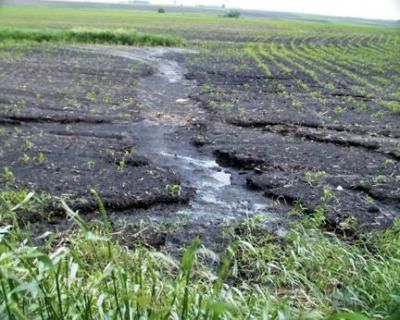
- Gully Erosion: This type of erosion happens during heavy rainfall when running water cuts deep channels into the soil. This process makes the land unsuitable for cultivation, leading to the formation of what is known as "bad land."
- Rill Erosion: Rill erosion occurs when runoff water creates small channels running down the slope. It represents an intermediate stage between sheet erosion and gully erosion.
- Sheet Erosion: Sheet erosion refers to the washing away of topsoil over large areas due to water flowing in a sheet-like manner.
- Leaching: Leaching occurs when soil is bare of vegetation, and nutrients present in the soil percolate downwards due to heavy rainfall. This process makes the soil infertile.
- Stream Bank Erosion: Stream bank erosion takes place when streams or rivers change their course by cutting into one bank and depositing silt on the opposite bank.
- Sea or Shore Erosion: Sea or shore erosion occurs when powerful waves from the sea crash against the coast, breaking cliff rocks. The fragmented material is then removed by retreating sea waves. This type of erosion has been experienced along both eastern and western coasts.
Soil Erosion Due to Human Action
- Deforestation has led to increased soil erosion, as the absence of vegetation on land results in the washing away of soil.
- Overgrazing by domestic animals also contributes to soil erosion.
Soil Erosion by Winds
- Wind Erosion: This occurs when wind displaces the top layer of soil, commonly referred to as wind erosion.
- Saltation: In areas with exposed, bare land subjected to high-velocity winds, smaller soil particles are carried away in a bouncing and hopping motion across the surface, a process called saltation.
- Soil Creep: The movement where larger soil particles roll and slide along the ground surface is termed soil creep.
Affected Regions in India:
- The Badlands surrounding the Chambal and Yamuna rivers experience significant soil erosion.
- The Western Himalayan region is also prone to this phenomenon.
- Soil erosion is a concern in the Chotanagpur Plateau region.
- The Tapti Sabarmati valley area in Gujarat suffers from soil erosion.
- Maharashtra's Regur soil area faces similar issues.
- The arid zones of Rajasthan, Gujarat, and Haryana are affected by wind erosion due to their dry conditions.
Methods to Prevent Soil Erosion
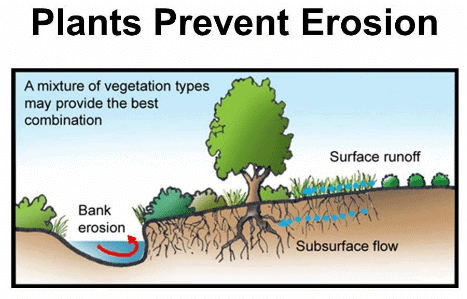
Soil can be conserved in the following ways:
- Contour Ploughing: When ploughing is done along the contour lines of the land, it is called contour ploughing. This method helps to reduce the flow of water down the slopes, thereby aiding in soil conservation.
- Terrace Farming: Terrace farming involves cutting steps or terraces into the slopes of hills. This technique helps to reduce soil erosion by creating flat areas that slow down water runoff.
- Strip Cropping: Strip cropping involves planting strips of grass between strips of crops. This method helps to break the speed of winds, reducing soil erosion caused by wind.
- Shelter Belts: Shelter belts are created by planting trees in a row. These trees act as a barrier, breaking the force of the winds. This method has been particularly useful in stabilizing dunes in the deserts of western India.
- Plugging of Gullies: During heavy rainfall, gullies formed in the soil can be plugged with deposits of silt. This helps to prevent further erosion and loss of soil.
Soil conservation is essential to maintain soil fertility and agricultural productivity. Soil erosion can lead to increased risks of droughts and floods, and it can also trigger landslides, especially in areas affected by deforestation.
In India, various programmes have been initiated to prevent soil erosion, including:
- Integrated watershed management programme launched during the Sixth Plan to enhance catchment ability by absorbing rainwater and reducing erosion in flood-prone rivers.
- Scheme for reclamation and development of ravine areas in Madhya Pradesh, Uttar Pradesh, and Rajasthan, focusing on afforestation and ravine reclamation.
- Scheme for controlling shifting cultivation in northeastern states like Arunachal Pradesh, Mizoram, Nagaland, Tripura, and Assam.
- National Project on Development and Use of Biofertilisers and National Project on Quality Control during the Seventh Five Year Plan to balance fertiliser use.
|
33 videos|86 docs|17 tests
|
FAQs on Revision Notes: Soils in India - Geography Class 10 ICSE
| 1. What are the main types of soils found in India? |  |
| 2. How is soil erosion by water a problem in India? |  |
| 3. What are the human actions that contribute to soil erosion in India? |  |
| 4. What is the impact of wind erosion on soils in India? |  |
| 5. How can soil erosion be prevented in India? |  |





















